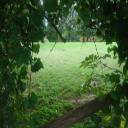Yahoo Answers is shutting down on May 4th, 2021 (Eastern Time) and beginning April 20th, 2021 (Eastern Time) the Yahoo Answers website will be in read-only mode. There will be no changes to other Yahoo properties or services, or your Yahoo account. You can find more information about the Yahoo Answers shutdown and how to download your data on this help page.
Trending News
what is the difference between quartzite and quartz?
I took a trip to Hanging Rock in NC recently; I was curious about the layers down by the lower falls. I think what I saw was quartzite. Any ideas?
6 Answers
- 1 decade agoFavorite Answer
The difference between the two is that quartz is a mineral and quartzite is a metamorphic rock. Quartz is a mineral composed of Silicon and Oxygen. It is very stable on the Earth's surface and is therefore common in sedimentary, igneous, and metamorphic rocks. When a granite boulder is eroded, the quartz crystals can be carried pretty far. They are broken apart and rounded and can collect to create sandstone. If this sandstone is buried and undergoes sufficient heat and temperature, it will metamorphose into a quartzite.
Here's a website that has a nice geologic history of Hanging Rock State Park, you'll have to scroll down to find it.
- 6 years ago
This Site Might Help You.
RE:
what is the difference between quartzite and quartz?
I took a trip to Hanging Rock in NC recently; I was curious about the layers down by the lower falls. I think what I saw was quartzite. Any ideas?
Source(s): difference quartzite quartz: https://tinyurl.im/S5Ekt - Professor KittyLv 61 decade ago
The main difference between quartz and quartzite is, quartzite is metamorphic and quartz is commonly hydrothermal or igneous. If there are metamorphic layers above and below the area in question then its a good bet that its quartzite. If the layer is crosscutting other layers then is could be just common quartz.
- How do you think about the answers? You can sign in to vote the answer.
- Anonymous1 decade ago
Quartz is a mineral
Quartzite is a sandstone rock originally made up of quartz grains which has later been slightly metamorphosed. It is usually very hard.
- Michael NLv 61 decade ago
Quartz is the second most common mineral in the Earth's continental crust. It is made up of a lattice of silica (SiO2) tetrahedra. Quartz has a hardness of 7 on the Mohs scale and a density of 2.65 g/cm³.
Crystal habit
Quartz belongs to the rhombohedral crystal system. The ideal crystal shape is a six-sided prism terminating with six-sided pyramids at each end. In nature quartz crystals are often twinned, distorted, or so intergrown with adjacent crystals of quartz or other minerals as to only show part of this shape, or to lack obvious crystal faces altogether and appear massive. Well-formed crystals typically form in a 'bed' that has unconstrained growth into a void, but because the crystals must be attached at the other end to a matrix, only one termination pyramid is present. A quartz geode is such a situation where the void is approximately spherical in shape, lined with a bed of crystals pointing inward.
Quartzite is a hard, metamorphic rock which was originally sandstone.[1] Sandstone is converted into quartzite through heating and pressure usually related to tectonic compression within orogenic belts. Pure quartzite is usually white to grey. Quartzites often occur in various shades of pink and red due to varying amounts of iron oxide. Other colors are due to impurities of minor amounts of other minerals.
In true metamorphic quartzite, also called meta-quartzite, the individual quartz grains have recrystallized along with the former cementing material to form an interlocking mosaic of quartz crystals. Minor amounts of former cementing materials, iron oxide, carbonate and clay, are often recrystallized and have migrated under the pressure to form streaks and lenses within the quartzite. Virtually all original textures and structure have usually been erased by the metamorphism.
Orthoquartzite is a very pure quartz sandstone composed of usually well rounded quartz grains cemented by silica. Orthoquartzite is often 99% SiO2 with only very minor amounts of iron oxide and trace resistant minerals such as zircon, rutile and magnetite. Although few fossils are normally present the original texture and sedimentary structures are preserved.
Quartzite is very resistant to chemical weathering and often forms ridges and resistant hilltops. The nearly pure silica content of the rock provides little to form soil from and therefore the quartzite ridges are often bare or covered only with a very thin soil and little vegetation.
Because of its hardness, about 7 on Mohs' scale of mineral hardness,[2][3] crushed quartzite is often used as railway ballast.[4][5] In the United States, formations of quartzite can be found in eastern South Dakota,[6] southwest Minnesota,[7] the Baraboo Hills in Wisconsin,[8] the Wasatch Range in Utah,[9] near Salt Lake City, Utah and as resistant ridges in the Appalachians[10] and other mountain regions. Quartzite is also found in the Morenci Copper Mine in Arizona.[11] The town of Quartzsite in western Arizona derives its name from the quartzites in the nearby mountains.
Source(s): http://en.wikipedia.org/wiki/Quartz





